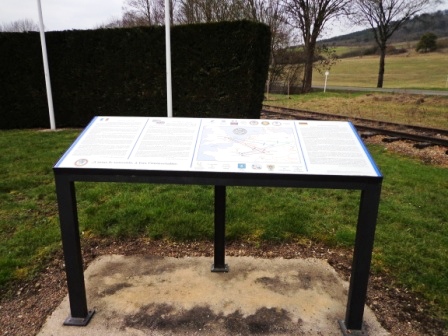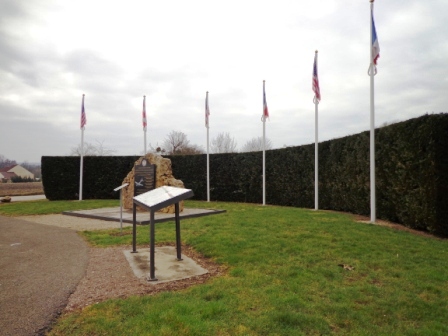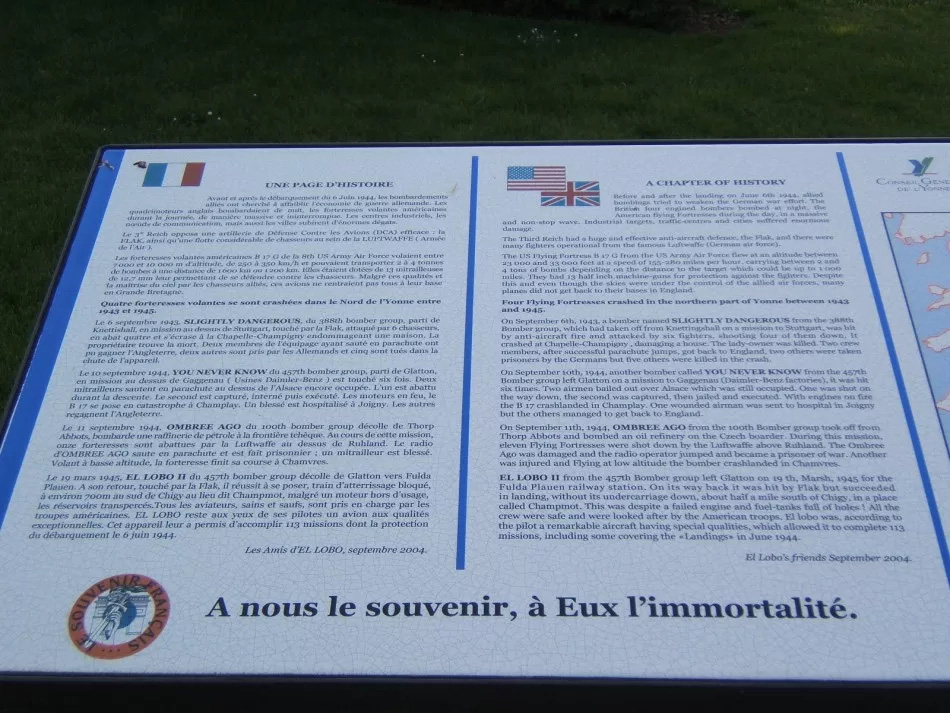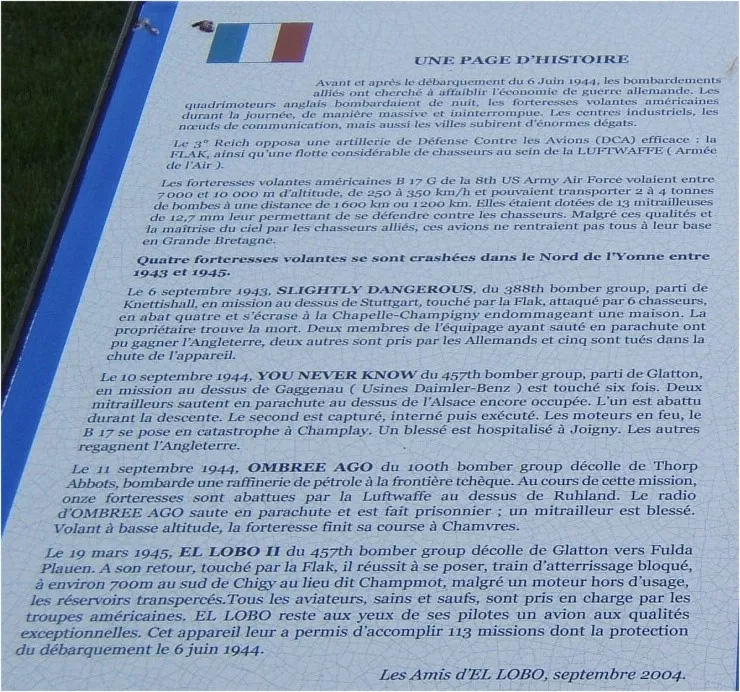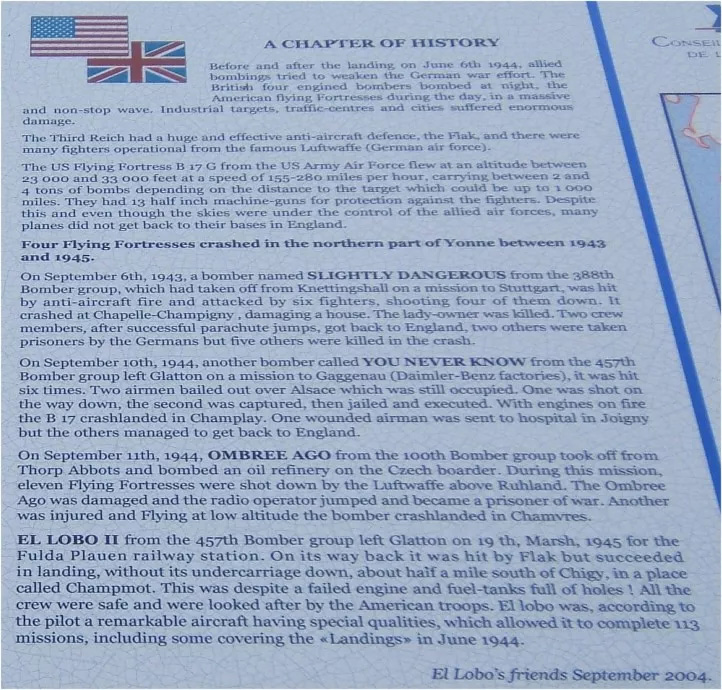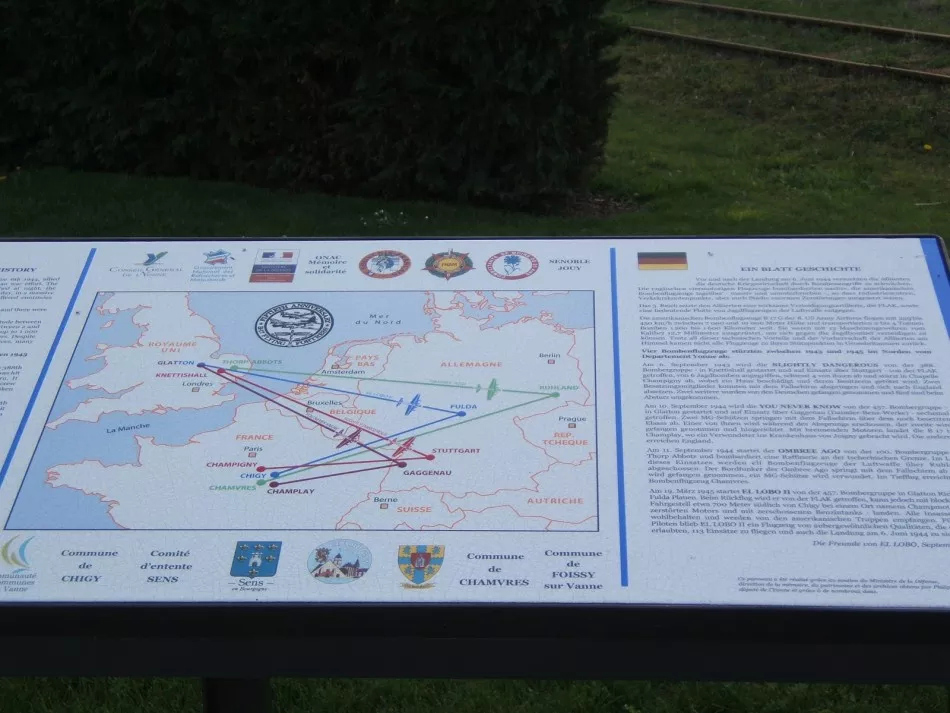Four Crashes Information Panel
Details:
At the rest area, to the right of the monument.
Plaque
An enameled lava rock sign in French, English and German describing the crashes of four B-17 Bombers in the northern part of Yonne.
Monument Text:
A Chapter of History
Before and after the landing on June 6th 1944, allied bombings tried to weaken the German war effort. The British four engined bombers bombed at flight, the American flying Fortresses during the day, in a massive and non-stop wave. Industrial targets, traffic-centres and cities suffered enormous damage.
The Third Reich had a huge and effective anti-aircraft defence, the Flak, and there were many fighters operational from the famous Luftwaffe (German air force).
The US Flying Fortress B17 G from the US Army Air Force flew at an altitude between 23000 and 33000 feet at a speed of 155-280 miles per hour, carrying between 2 and 4 tons of bombs depending on the distance to the target which could be up to 1000 miles. They had 13 half inch machine-guns for protection against the fighters. Despite this and even though the skies were under the control of the allied air forces, many planes did not get back to their bases in England.
Four Flying Fortresses crashed in the northern part of Yonne between 1943 and 1945.
On September 6th, 1943, a bomber names SLIGHTLY DANGEROUS from the 388th Bomber group, which had taken off from Knettingshall on a mission to Stuttgart, was hit by anti-aircraft fire and attacked by six fighters, shooting four of them down. It crashed at Chapelle-Champigny, damaging a house. The lady-owner was killed. Two members, after successful parachute jumps, got back to England, two others were taken prisoners by the Germans but five others were killed in the crash.
On September 10th, 1944, another bomber called YOU NEVER KNOW from the 457th Bomber group left Glatton on a mission to Gaggenau (Daimler-Benz factories), it was hit six times. Two airmen bailed out over Alsace which was still occupied. One was shot on the way down, the second was captured, then jailed and executed. With engines on fire the B17 crashlanded in Champlay. One wounded airman was sent to hospital in Joigny but the others managed to get back to England.
On September 11th, 1944 OMBREE AGO from the 100th Bomber group took off from Thorp Abbots and bombed an oil refinery on the Czech boarder. During this mission, eleven Flying Fortresses were shot down by the Luftwaffe above Ruhland. The Ombree Ago was damaged and the radio operator jumped and became a prisoner of war. Another was injured and Flying at low altitude the bomber crashlanded in Chamvres.
EL LOBO II from the 457th Bomber group left Glatton on 19th, Marsh, 1945 for the Fulda Plauen railway station. On its way back it was hit by Flak but succeeded in landing, without its undercarriage down, about half a mile south of Chigy, in a place called Champmot. This was despite a failed engine and fuel-tanks full of holes! All the crew were safe and were looked after by the American troops. El lobo was, according to the pilot a remarkable aircraft having special qualities, which allowed it to complete 113 missions, including some covering the in June 1944
El Lobo's friends September 2004
A nous le souvenir, a Eux l'immortalie.
English Translation:
For us the memory, and them immortality.
Commemorates:
Units:
100th Bomber Group
349th Bomber Squadron, 100th Bomber Group
388th Bombardment Group (Heavy)
457th Bomber Group (H)
560th Bomber Squadron, 388th Bomber Group
748th Bomber Squadron, 457th Bomber Group
749th Bomber Squadron, 457th Bomber Group
8th Air Force
United States Air Force
Wars:
WWII
Other images :

